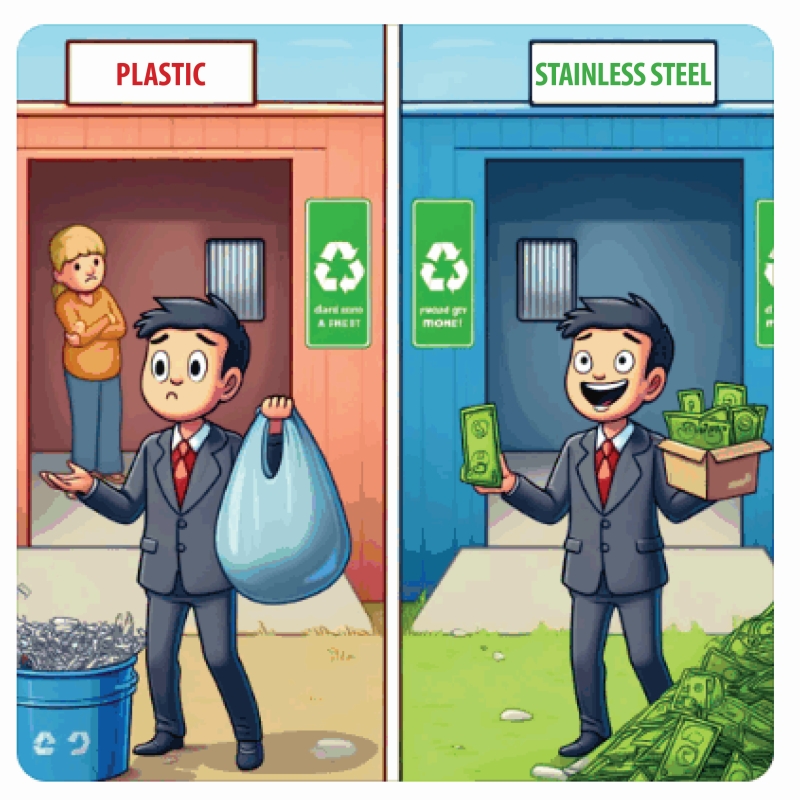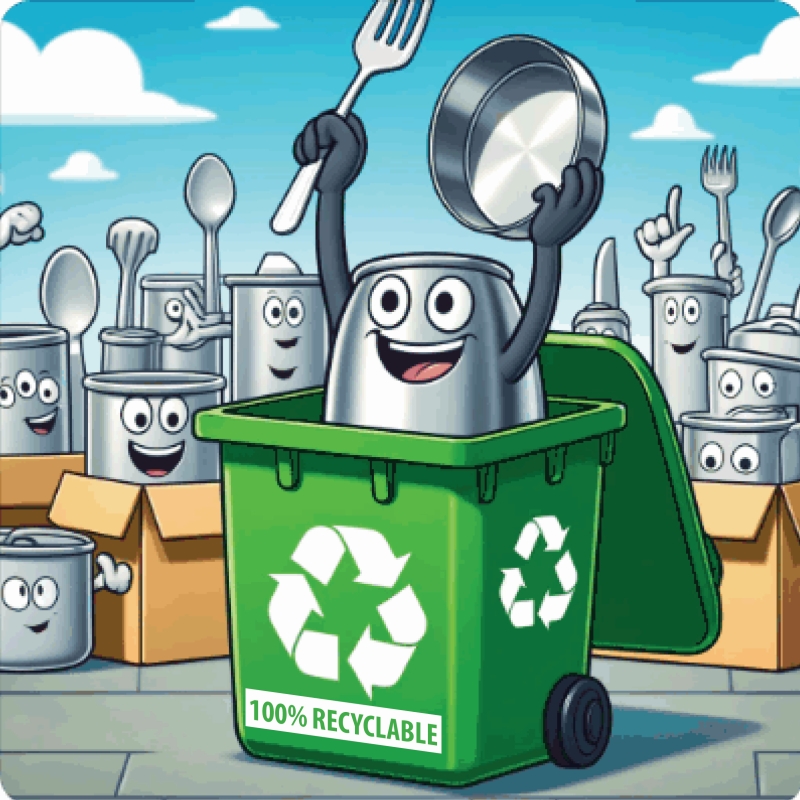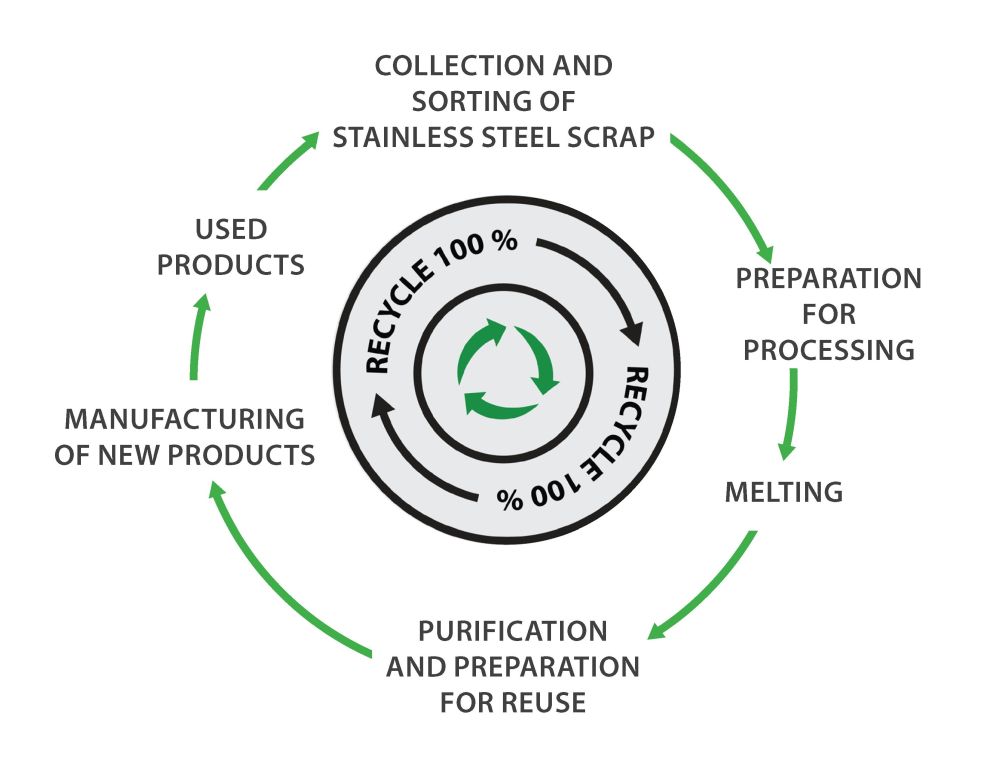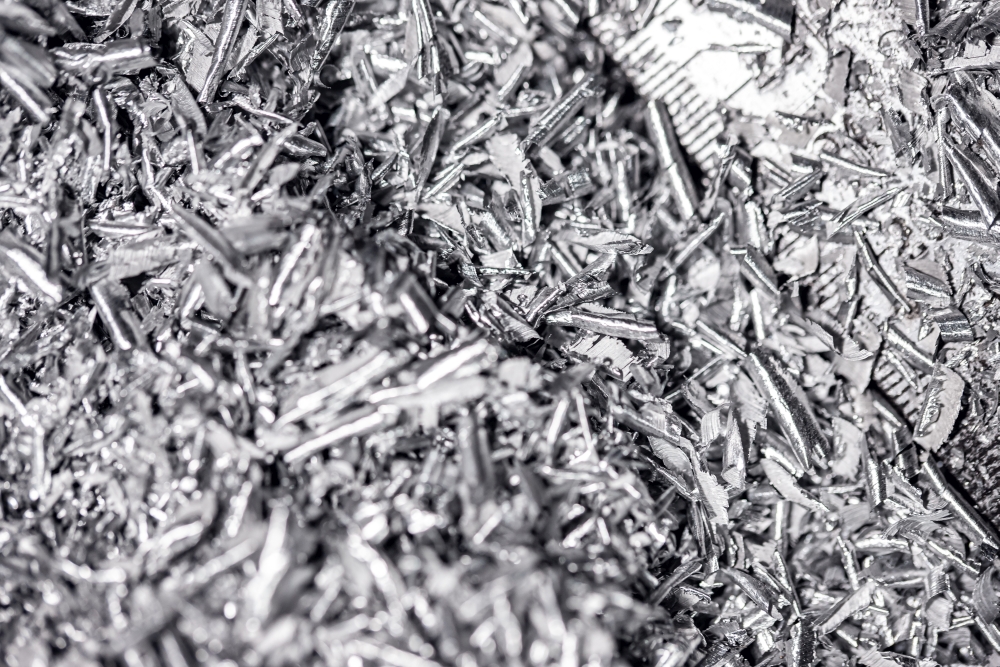Can stainless steel be recycled?
The answer is YES. In fact, apart from its outstanding physical properties, recyclability is one of the main advantages of stainless steel.
The fact is that stainless steel is a material that:
- can be almost entirely recycled after use
- retains some value even as waste (example: a swimming pool made of stainless steel can be sold after 20 years of use, while a plastic pool is taken to a waste collection center where you will be charged for its disposal).

Stainless steel products are almost 100 % recyclable
Due to its composition and properties, stainless steel is a material that is very suitable for recycling. When a stainless steel product reaches the end of its service life, it can be recycled and reused to make new products, without any loss of material quality. That’s why tanks made of stainless steel are more sustainable than those made of plastic, wood, or concrete.

How are stainless steel products recycled?
Collection and sorting: In metal recycling plants, waste products are collected and sorted by type and properties.
Preparation: The collected material is then cut, cleaned, compressed, and prepared for further processing.
Melting: The metal is then melted in an electric furnace. Although this process does require some energy, its consumption is substantially smaller when compared to the process of obtaining new metals.
Purification and solidification: Molten steel is then purified using various technological processes, chemically analyzed and, if necessary, further processed to achieve the desired properties of a specific type of steel. The metal is then shaped into larger blocks, plates, wires.
Reuse: Purified steel can be used to make new products.
Over time, each stainless steel product will lose its value and become waste. At this point it can be recycled again and the cycle is repeated.

What is the recycled content of stainless steel?
New stainless steel sheets are made up of approximately 60 % of recycled steel. The recycled content can be even higher (up to 80 %) and varies depending on various factors, such as a customer’s demand for specific final material properties or the current availability of recycled materials.
The stainless steel industry is based on recycling. This helps reduce the need for new raw materials, the energy consumption, and the amount of waste.

